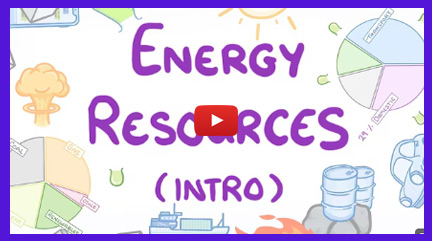
Energy Resources
Energy resources are the sources we use to generate power for various needs, including electricity, heating, and transportation. They include renewable sources like solar, wind, and hydroelectric power, as well as non-renewable sources like fossil fuels (coal, oil, and natural gas) and nuclear energy. Understanding energy resources helps us make informed choices about sustainability and environmental impact.
What are non-renewable and renewable resources?
Non-renewable energy resources are sources of energy that cannot be replaced within a short period, such as fossil fuels like coal, oil, and natural gas, as well as nuclear fuels like uranium. These resources are finite and take millions of years to form, and their extraction and consumption contribute to environmental pollution and climate change.
Renewable energy resources, on the other hand, are sources of energy that are naturally replenished and can be used repeatedly without running out. Examples include solar energy, wind energy, hydropower (energy from water), geothermal energy (energy from heat within the Earth), and biomass (energy from organic materials like plants and waste). These resources are abundant and have minimal environmental impact compared to non-renewable sources.
- Solar Energy - Energy obtained from sunlight through solar cells. The advantages are that it is abundant and freely available, has low operating costs, no greenhouse gas emissions during operation. The disadvantages are that it is an intermittent availability (depending on weather and time of day), requires a large surface area for significant power generation and initial installation costs can be high.
- Wind Energy - Energy generated from the kinetic energy of moving air using wind turbines. The advantages are that it is abundant and freely available, has low operating costs, no greenhouse gas emissions during operation. The disadvantages are that it is intermittent availability (depends on wind speed and consistency), visual and noise impact on landscapes and potential harm to wildlife.
- Hydropower - Energy derived from the gravitational force of flowing water in rivers or from dams. The advantages are that it is reliable and predictable, has large-scale energy generation potential, no greenhouse gas emissions during operation. The disadvantages are that it has high initial construction costs, environmental impacts such as habitat disruption and fish migration barriers, limited by geography.
- Geothermal Energy - Energy extracted from heat stored within the Earth's crust, typically through geothermal power plants or geothermal heat pumps. The advantages are that it is reliable and constant, low greenhouse gas emissions, minimal land footprint. The disadvantages are that it is limited to areas with suitable geothermal resources, high initial installation costs and potential for subsurface water contamination.
- Biomass Energy - Energy produced from organic materials such as wood, agricultural residues, and animal waste through combustion or conversion processes. The advantages are that it is widely available and renewable, can utilize waste materials and can be used for heating, electricity generation, and transportation fuels. The disadvantages are that it gives out carbon emissions during combustion, air pollution from particulates and other emissions and competition with food production and land use.
- Tidal Energy - Energy generated from the gravitational pull of the moon on the Earth's tides, usually through tidal turbines. The advantages are that it is predictable and reliable, no greenhouse gas emissions during operation, long lifespan of tidal energy infrastructure. The disadvantages are that it is limited to coastal areas with strong tides, potential environmental impacts on marine ecosystems and high initial construction costs.
- Wave Energy - Energy captured from the motion of ocean waves using wave energy converters. The advantages are that it is abundant and renewable, no greenhouse gas emissions during operation, relatively consistent wave energy potential. The disadvantages are that it is an emerging technology with limited commercial deployment, high initial costs and potential environmental impacts on marine habitats and navigation.
Revision Notes

The Cornell method is like a supercharged note-taking system that helps you ace your revision!
Print out our blank revision notes pages to help you revise.
How to make effective revision notes with the Cornell method.
Exam Questions & Answers

Download and print off practice our FREE worksheet with exam style questions on Cell Biology.
Revision Notes

The Cornell method is like a supercharged note-taking system that helps you ace your revision!
Print out our blank revision notes pages to help you revise.
How to make effective revision notes with the Cornell method.
Why Do I Need to Know About Energy Resourses?
In Everyday Life
- Understanding where the energy used in your home, school, or devices comes from
- Learning the difference between renewable (e.g. solar, wind, hydro) and non‑renewable (e.g. coal, oil, gas) energy sources
- Thinking more carefully about how energy is produced, what it costs, and its environmental impact
- Making smarter decisions about energy use and supporting sustainable choices in everyday life
- Preparing for conversations on climate change, carbon footprint, and energy policy
In Science & Physics Careers
- Designing and improving renewable energy systems like solar panels, wind turbines, or bioenergy
- Working on grid technology, energy storage, and making energy generation more efficient
- Contributing to innovation in clean energy, electric vehicles, and energy conservation technologies
- Applying knowledge of energy resources in engineering, environmental science, and public policy
- Helping create a sustainable future by reducing reliance on fossil fuels and promoting green energy


